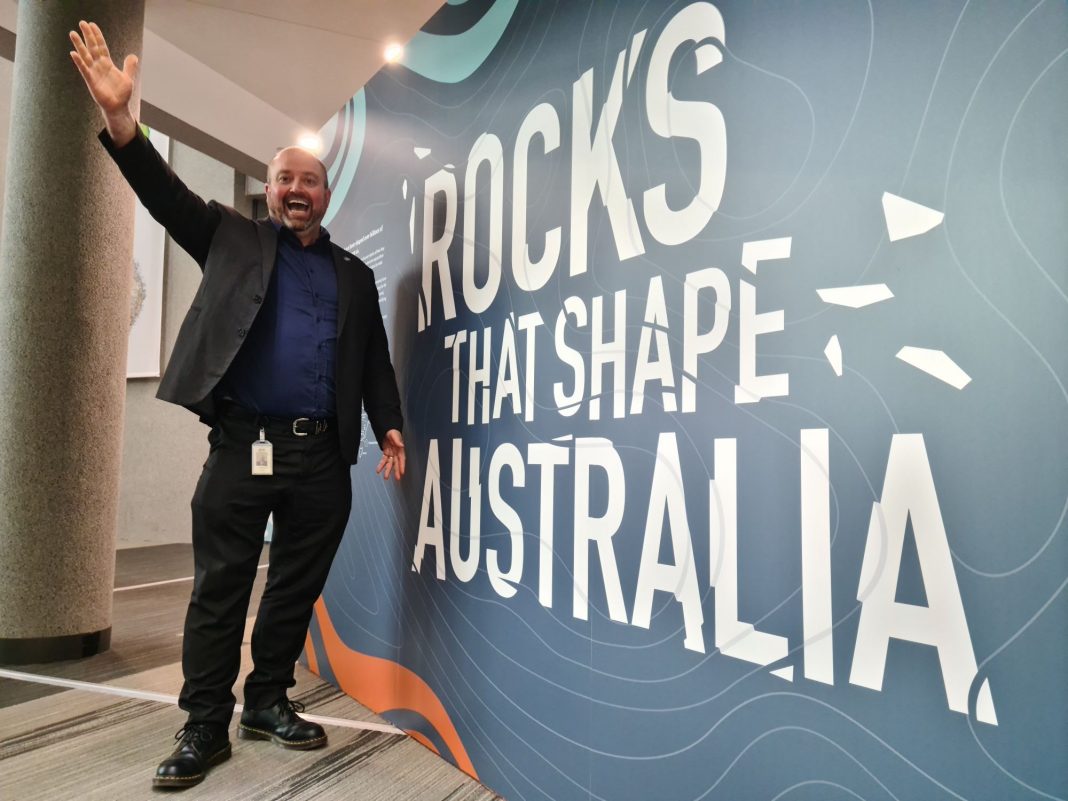Rocks are great story-tellers you just have to know how to read them. Geoscience Australia has created a real page-turner with a new educational exhibition – Rocks that Shape Australia.
Every rock has been partnered with an object that we can all relate to, such as chunk of 23-million-year-old limestone from Geelong, paired with a (taxidermied) wallaby. This strange pairing is because the limestone is made up of sea creatures from when the sea was higher and when Australia drifted northwards from Antarctica to became isolated, bringing on the evolution of marsupials. The penny drops.
A chunk of iron stone from WA, has been paired with an oxygen tank, another unusual match that shows that the iron was trapped in rock 3 billion years ago (quite a while considering the Earth is 4.6 billion years old) when micro-organisms began producing oxygen. As the atmosphere changed, the iron became locked in the stone. Another “aha” moment.
Chief Scientist at Geoscience Australia, Dr Steve Hill, says the Earth is fundamental for what we need in our lives – mobile phones (and oxygen and water).
“We’ve pulled apart old mobile phones to show people that we need the lithium in batteries, copper is a great conductor of electricity for wiring, there’s gold in our phones,” Dr Hill said. “A lot of these elements are not commonplace, like Indium (for touch screens), it’s not a particularly abundant element.”
Probably the most resonating rock story is a sample of gold from the Victorian gold rush, paired with century-old Chinese coins and an old mining pick – multiculturalism.
“This gold shows the significance of the Victorian gold rush and the recognition of how important the gold rush is in bringing over people from all over the world,” Dr Hill said.
The exhibition is far more than a static display, it’s an interactive geological story relating to all Australians
The highlight is a fossilised jaw with teeth from an Ichthyosaur (not a dinosaur because it didn’t go extinct, but rather evolved into dolphins), dating back 145-166 million years ago, when parts of inland Australia were part of an inland sea. It is joined by a spectacular, three-metre-long, 3D-printed Ichthyosaur.
A lump of coal may not be popular at the moment (Sco-Mo may disagree) but it has been displayed alongside an ancient cycad plant, representing the immense number of plant material that’s built up over millions of years to form coal.
Basalt from western Victoria’s volcanic plains sits alongside an Aboriginal weaving, illustrating the Indigenous use of these aerated (volcanic) boulders that were light and easy to lift when building eel and fish traps.
This clever exhibition is based on geologist Dr Marita Bradshaw’s popular paper The seven rocks that made Australia. On now at Geoscience Australia as part of National Science Week: www.ga.gov.au



